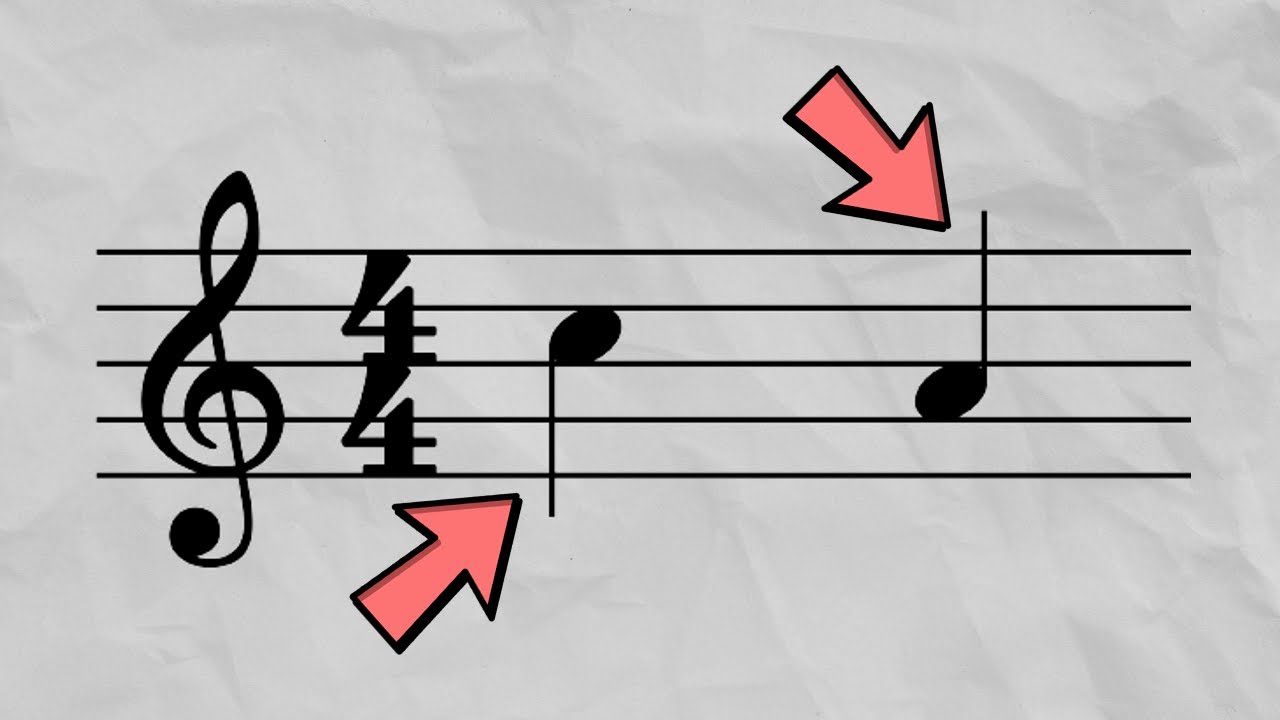Home>Events & Info>Note>What Does The A Note Mean In Music


Note
What Does The A Note Mean In Music
Published: December 5, 2023
Learn the meaning of the "A note" in music and how it contributes to melody and harmony. Enhance your musical knowledge and understanding.
(Many of the links in this article redirect to a specific reviewed product. Your purchase of these products through affiliate links helps to generate commission for AudioLover.com, at no extra cost. Learn more)
Table of Contents
Introduction
Music is a language that transcends borders and cultures, providing a medium for self-expression and communication. At the heart of music lies the notes, the building blocks that create melodies, harmonies, and rhythms. One of the most fundamental and widely recognized notes in music is the A note.
The A note is a key component in many songs and compositions, serving as a reference point for tuning instruments and providing a foundation for musical scales. Whether you’re a musician or simply a music enthusiast, understanding the significance of the A note can deepen your appreciation for the art form.
In this article, we will explore the meaning of the A note in music, its placement on the musical staff, its pitch and frequency, its relationship to other notes, the musical notation used to represent it, variations of the A note in different octaves, and its historical significance. By delving into these aspects, we hope to unravel the mysteries and complexities surrounding this essential note.
Definition of the A Note
In music theory, the A note refers to a specific pitch that is designated by the letter “A”. It is a musical note that falls in between G and B on the standard Western musical scale. The A note is often used as a reference point for tuning other instruments and is considered a fundamental tone in many musical compositions.
When we refer to the A note, we are referring to a specific frequency that has been standardized to 440 Hz, also known as A440. This means that when an instrument is tuned correctly, the A note will produce a sound wave with a frequency of 440 vibrations per second. This pitch is considered the universal standard for the A note.
It’s important to note that there are different octaves of the A note. An octave is a musical interval that spans eight notes, from one A to the next A in a higher or lower range. Each octave of the A note will have a different frequency, but they will share the same fundamental pitch.
The A note is crucial in establishing the overall key and tonality of a piece of music. Different musical scales and modes are constructed based on the relationship of their notes to the A note. In Western music, the A note serves as a point of reference for defining the major and minor scales, which are the foundation of most Western musical compositions.
Overall, the A note holds great significance and serves as a fundamental element in music theory. Its pitch, frequency, and relationship to other notes make it an essential component in the creation and understanding of music.
Placement of the A Note on the Staff
In written music, the staff is used to notate musical notes, indicating their pitch and duration. The placement of the A note on the staff provides a visual representation of its position in relation to other notes.
The staff consists of five horizontal lines and four spaces in between. Each line and space represents a specific pitch. The A note is typically placed on the second line from the bottom line of the staff. This line is known as the “A line” and serves as a reference point for identifying the note.
In standard Western music notation, notes on the staff are represented by oval-shaped symbols called “noteheads”. The specific placement of the notehead on or between the lines and spaces of the staff determines its pitch.
For the A note, the notehead is placed on the second line of the staff. It is important to remember that the position of the notehead can vary depending on the key signature and the presence of accidentals, which are symbols used to modify the pitch of a note.
The staff also utilizes additional symbols to indicate the duration or length of a note. These symbols include the “stem”, which is a vertical line attached to the notehead, and flags or beams, which are diagonal lines that connect multiple noteheads together.
By understanding the placement of the A note on the staff, musicians and composers can easily read and interpret sheet music. It allows them to accurately perform the desired pitch and rhythm of the A note within a musical composition.
Pitch and Frequency of the A Note
Pitch refers to the perceived highness or lowness of a sound. In the case of the A note, it has a consistent pitch that can be defined by its frequency. Frequency is the rate at which a sound wave vibrates and is measured in Hertz (Hz). The A note is commonly standardized to a frequency of 440 Hz, known as A440.
When the A note is played at A440, it produces a sound wave with 440 vibrations per second. This pitch is often referred to as “concert pitch” or “tuning pitch” because it serves as a reference for tuning other musical instruments. Musicians typically tune their instruments by adjusting the tension or length of the strings, or the positioning of keys or valves, until the A note matches the frequency of A440.
It’s worth noting that there are variations of the A note in different octaves. An octave is a range of pitches that spans from one A to the next A, either higher or lower. Each octave of the A note will have a different frequency, but they will share the same fundamental pitch. For example, the A note in the octave below A440 has a frequency of 220 Hz, while the A note in the octave above A440 has a frequency of 880 Hz.
Understanding the pitch and frequency of the A note is essential for musicians to create harmonious melodies and harmonies. It allows them to accurately reproduce the desired pitch in their playing or singing. Additionally, the consistent pitch of the A note provides a stable foundation for the tuning of instruments and the coordination of musical ensembles.
Relationship of the A Note to Other Notes
In the realm of music theory, the A note plays a crucial role in establishing relationships with other notes. These relationships form the basis of musical scales, chords, and harmonies.
The A note serves as a reference point for defining the major and minor scales. The major scale is a collection of pitches arranged in a specific pattern of whole steps and half steps. The A major scale, for example, consists of the following notes: A, B, C#, D, E, F#, and G#. The A note acts as the tonic, or starting point, and gives the scale its characteristic sound and tonal center.
Similarly, the A note is integral to the construction of the A minor scale. The A minor scale shares the same pitches as the C major scale, but it starts and ends on the A note. The A minor scale has the following notes: A, B, C, D, E, F, and G. The A note becomes the tonic in this scale, providing a different tonality and emotional quality compared to its major counterpart.
Furthermore, the A note forms relationships with other notes to create chords and harmonies. Chords are combinations of multiple notes played simultaneously, while harmonies involve the interaction of different pitches to create pleasing sounds.
For example, the A major chord consists of the A note, the C# note, and the E note. Strumming or playing these three notes together creates a harmonious and resonant sound associated with a major tonality. Similarly, the A minor chord comprises the A note, the C note, and the E note, creating a melancholic and introspective quality.
Overall, the A note’s relationship to other notes within scales, chords, and harmonies allows musicians to create a wide range of emotions and musical expressions. It provides a foundation for understanding the interconnectedness of different pitches and their role in creating cohesive and meaningful musical compositions.
Musical Notation for the A Note
In written music, the A note is represented by specific symbols and notations that indicate its pitch and duration. These notations allow musicians to read and perform the A note accurately.
The most common symbol used to represent the A note is an oval-shaped notehead, which is placed on the second line of the staff. The position of the notehead on or between the lines and spaces of the staff determines its pitch. In the case of the A note, it is placed on the “A line” of the staff.
In addition to the notehead, the A note may also include other symbols to modify its duration. For example, a filled-in notehead signifies a full note, which lasts for four beats in common time. A notehead with a stem and a flag indicates an eighth note, typically lasting for half a beat. These symbols and their variations provide a visual representation of how long the A note should be held or played.
Accidentals, which are symbols used to alter the pitch of a note, may also be present in the notation for the A note. The most common accidental is the sharp (#) symbol, which raises the pitch of a note by a half step. The A note with a sharp symbol is represented as A# or A♯. Similarly, the flat (b) symbol lowers the pitch of a note by a half step. The A note with a flat symbol is represented as Ab or A♭.
Sheet music for a piece may also include other notations such as key signatures, time signatures, and dynamics, which provide further instructions and information for performing the A note and the entire composition.
By understanding the musical notation for the A note, musicians can read and interpret sheet music accurately, ensuring that they perform the desired pitch, duration, and expression of the A note within a musical piece.
Variations of the A Note in Different Octaves
The A note exhibits variations in pitch as it is played in different octaves. An octave is a range of pitches that spans from one A to the next A, either higher or lower. Each octave of the A note sounds similar, but with a different frequency and range.
Starting from the A note known as A440, which has a frequency of 440 Hz, each octave represents a doubling or halving of the frequency. Going down to the lower octave, the A note has a frequency of 220 Hz, equivalent to A220. This lower A note is considered the first A below A440 and is often referred to as the “A1” octave.
Continuing upward, the next octave is A880, with a frequency of 880 Hz. This octave is commonly known as A2. The pattern continues, with each successive A note octave having a frequency twice that of the previous one.
Similarly, as we move to higher octaves, such as A1760 (A3), A3520 (A4), and A7040 (A5), the frequency continues to double. These higher octaves are often found on instruments such as the piano, guitar, and flute, covering a wide range of pitches and adding depth and richness to musical compositions.
Each octave of the A note provides its own unique character and timbre. Lower octaves tend to be deeper, richer, and more resonant, while higher octaves have a brighter and more vibrant quality. Moreover, the variations in octave allow musicians to explore different tonal elements within a composition, adding texture and depth to their musical arrangements.
Understanding the variations of the A note in different octaves is essential for musicians and composers. It allows them to select the appropriate octave for a particular musical passage, consider the desired tonal qualities, and create harmonies and melodies that are well-balanced and pleasing to the ear.
Historical Significance of the A Note in Music
The A note has held a significant role throughout the history of music, evolving in its cultural and artistic significance over time. Here, we’ll explore some of the key moments and developments that highlight the historical significance of the A note.
One notable turning point in the history of the A note occurred in the early 20th century. Prior to this period, there was no universal standard for tuning, resulting in variations in the pitch of the A note across different regions and even among individual musicians. In 1939, an international conference known as the International Congress on the Scientific Tuning adopted A440 as the standard pitch for the A note. This decision was made to provide consistency and enable musicians from around the world to play together in harmony.
Another aspect of the historical significance of the A note is its presence in various musical cultures and genres. From classical music to jazz, rock, and pop, the A note has remained a fundamental building block for composers and performers. Its versatility and adaptability have allowed musicians across different genres to utilize its pitch and frequencies in creating diverse and captivating compositions.
In addition, the A note has played a crucial role in the development of tuning systems and temperament. Different temperaments, such as equal temperament and just intonation, have been explored and employed over centuries to enhance the harmonies and melodic flow of musical compositions. The A note has been used as a reference point in determining the intervals and ratios between different pitches, influencing the overall tonal character and emotional impact of the music.
Lastly, the A note has often served as the starting point for tuning other instruments. Before the advent of electronic tuners, musicians relied on reference pitches from tuning forks or other instruments to gauge the correct pitch. The A note, due to its historical and standardized significance, has commonly been used as the reference pitch for tuning other instruments, ensuring that they are in harmony with each other.
In summary, the historical significance of the A note in music can be seen in its role in establishing international standards for tuning, its presence across diverse musical genres, its influence on tuning systems and temperament, and its function as a reference pitch for tuning other instruments. As music continues to evolve and new compositions are created, the A note will undoubtedly remain a cornerstone of musical expression and communication.
Conclusion
The A note holds a significant place in the world of music. From its definition as a specific pitch to its placement on the musical staff, the A note serves as a foundation and reference point for musicians and composers. Its pitch and frequency, along with its relationships to other notes, form the basis for musical scales, chords, and harmonies.
Through musical notation, the A note is visually represented on the staff, allowing musicians to read and interpret sheet music accurately. Its variations in different octaves provide musicians with a wide range of tonal possibilities and allow for the creation of diverse melodies and harmonies.
Historically, the A note has played a crucial role, from the establishment of the A440 standard tuning pitch to its presence in various musical cultures and genres. It has influenced tuning systems, temperament, and even the way other instruments are tuned. The A note has stood the test of time as a fundamental element in musical expression.
In conclusion, the A note symbolizes the fundamental nature of music. Understanding its significance, pitch, and relationships to other notes enhances our ability to appreciate and create music. The A note truly encompasses the artistry, precision, and universal language of music, contributing to the richness and depth of musical compositions throughout history and into the future.











